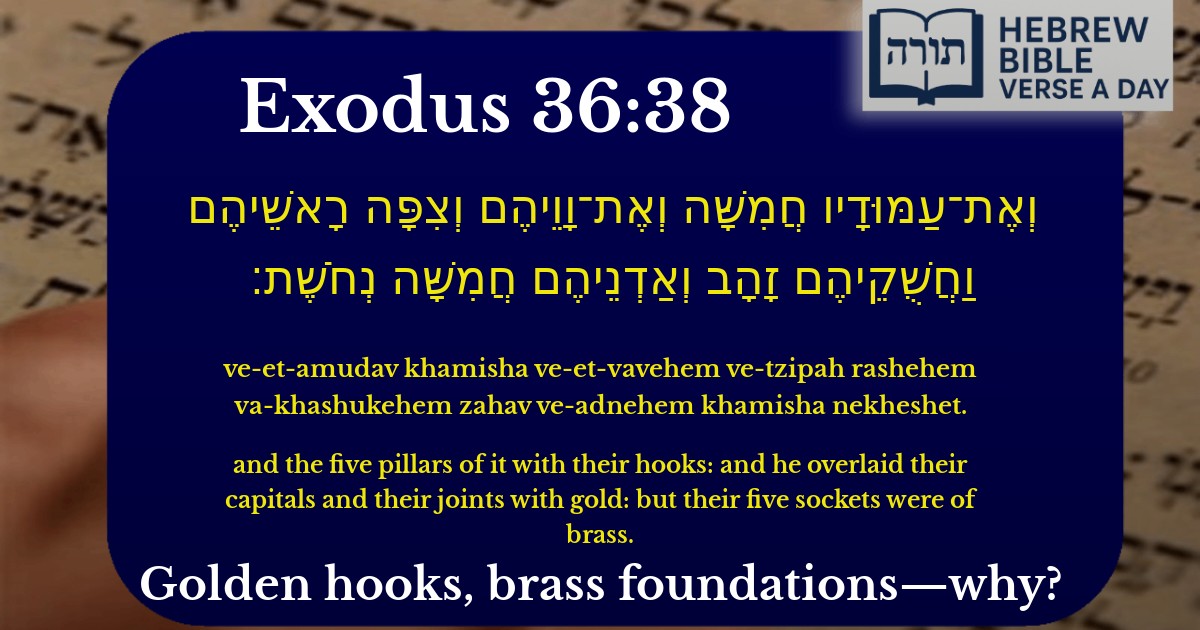Join Our Newsletter To Be Informed When New Videos Are Posted
Join the thousands of fellow Studends who rely on our videos to learn how to read the bible in Hebrew for free!
Hebrew Text
וְאֶת־עַמּוּדָיו חֲמִשָּׁה וְאֶת־וָוֵיהֶם וְצִפָּה רָאשֵׁיהֶם וַחֲשֻׁקֵיהֶם זָהָב וְאַדְנֵיהֶם חֲמִשָּׁה נְחֹשֶׁת׃
English Translation
and the five pillars of it with their hooks: and he overlaid their capitals and their joints with gold: but their five sockets were of brass.
Transliteration
Ve-et-amudav khamisha ve-et-vavehem ve-tzipah rashehem va-khashukehem zahav ve-adnehem khamisha nekheshet.
Hebrew Leining Text
וְאֶת־עַמּוּדָ֤יו חֲמִשָּׁה֙ וְאֶת־וָ֣וֵיהֶ֔ם וְצִפָּ֧ה רָאשֵׁיהֶ֛ם וַחֲשֻׁקֵיהֶ֖ם זָהָ֑ב וְאַדְנֵיהֶ֥ם חֲמִשָּׁ֖ה נְחֹֽשֶׁת׃ {פ}
Parasha Commentary
📚 Talmud Citations
This verse is not quoted in the Talmud.


Context in the Mishkan
This verse (Exodus 36:38) describes the construction details of the entrance screen (masach) to the Mishkan's courtyard. The five pillars (ammudim) supported the embroidered screen at the entrance, with their capitals (rasheihem) and connecting rods (chashukeihem) overlaid in gold, while their sockets (adneihem) were made of copper.
Symbolism of Materials
Structural Significance
The Midrash Tanchuma (Pekudei 11) connects the five pillars to the five books of the Torah, emphasizing that entry into holiness is guided by Torah wisdom. The hooks (vavim) represent the mitzvot that "connect" a person to divine service, as explained by the Kli Yakar.
Halachic Insights
Rambam (Hilchot Beit HaBechirah 1:15) derives from this verse that structural elements of sacred spaces require both aesthetic beauty (hidur mitzvah) and functional integrity. The gold overlay was not merely decorative but served to elevate the Mishkan's sanctity.